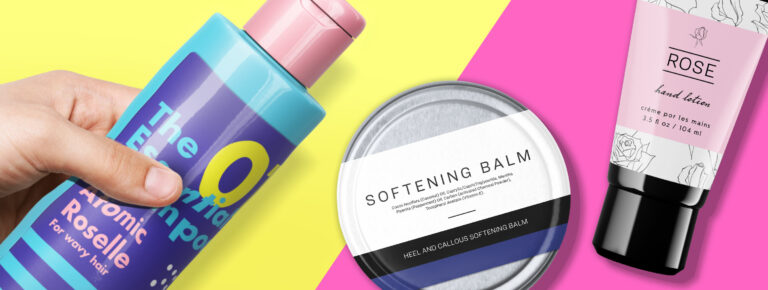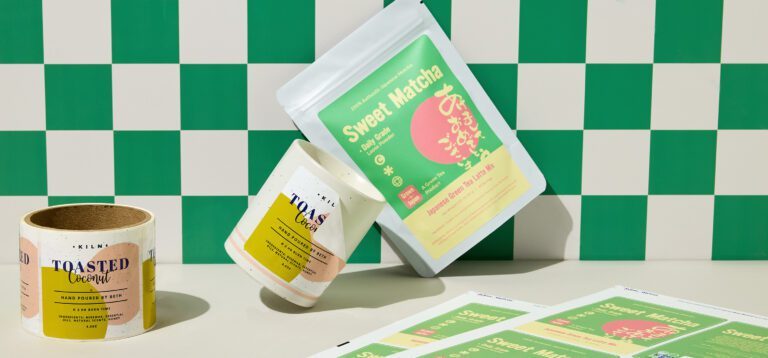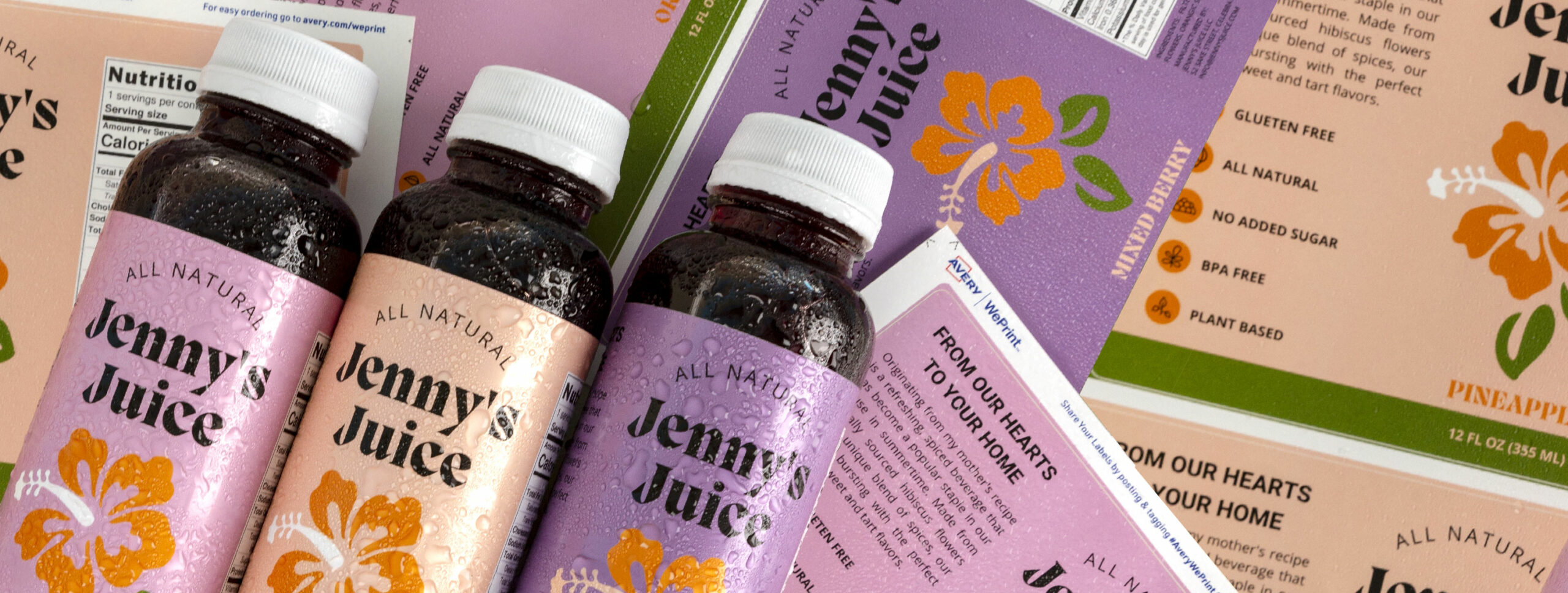
How Heat and Humidity Affect Labels
Estimated reading time: 6 minutes
How to store labels properly to avoid waste and company downtime
Other articles you might like:
Labels can do a lot for your business, from product branding and legal compliance to organization and security. They are an important investment for your brand, so they must be in optimal condition when you’re ready to apply them. Labels that haven’t been stored correctly in the proper climate can cause real headaches when it’s time for application.
In this article, you’ll learn how heat and humidity affect your labels, and how to mitigate these issues before they happen so your product labels (and your business) look their best at all times.
Heat effects on labels and stickers
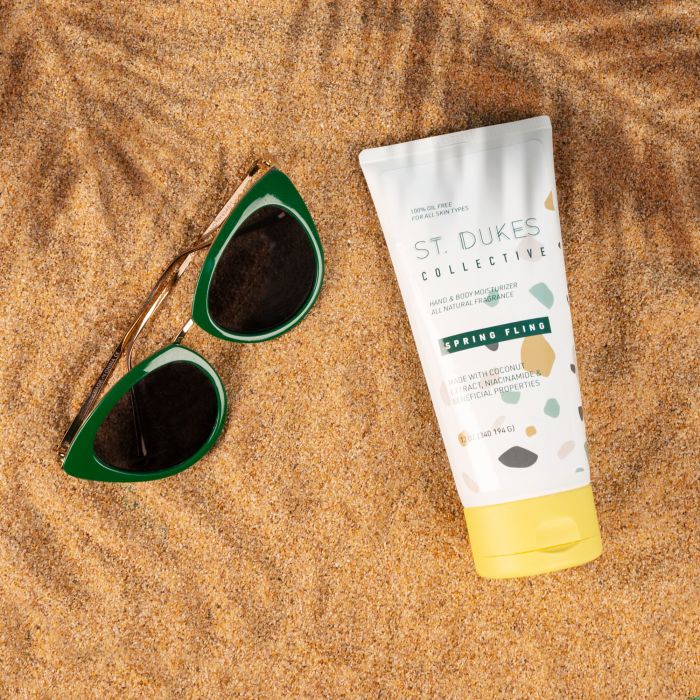
The ideal temperature range for storing and applying most labels is 60 to 77 degrees Fahrenheit.
Adhesive softening
Warmer temperatures can soften label adhesive which weakens its bond and makes it more likely that your label will curl, peel or fall off.
If you’re worried your labels have been exposed to high temperatures you can check for soft adhesives with a simple test. Apply the label to a surface similar to your products and see if the label stays adhered to it for 24 hours.
Adhesive ooze
Another issue with labels exposed to high temperatures is adhesive ooze. As the adhesive heats up it changes the viscosity and, as a consequence, the adhesive may spread. This oozed adhesive may transfer to application rollers and can require frequent cleaning of the application line equipment. It can also jam up printers and packing machines, which can dramatically impact operations where label machine application is employed.
A symptom of adhesive ooze is referred to as tacky edges. This is especially common on roll labels and makes getting the labels off the backing and onto your products challenging. With tacky edges, the adhesive around the edges of your label prematurely bonds due to heat, or it’s become too thin to function correctly.
One quick easy way to test for adhesive ooze is to run your fingers around the edge of the labels on the sheet or roll. The backing should feel smooth and uniform under your fingers, rather than bumpy or sticky.
Lifting and curling
Extreme heat can also cause your labels to lift and curl from the backing. When this happens, the adhesive is no longer in contact with the backing which may cause the adhesive to dry out. Using a label that has lifted or curled from its backing can result in “flagging” issues and corners that start peeling once applied to a product.
Typically, labels lifting and curling from backing can be detected visually. You may also be able to tell by running your fingers over the labels for small occurrences of lifting that are not readily visible.
Ink fading
In addition to lifting and curling, heat can affect the ink in your labels. The degree to which the ink is affected depends on the type of ink and the materials in your labels. The heat breaks the bonds in the ink, leading to a faded label look and that’s not how you want people to see your business.
Label distortion can easily be detected with a visual inspection. You may notice spots where the ink has faded due to heat rather than the entire label fading at once.
Humidity effects on labels
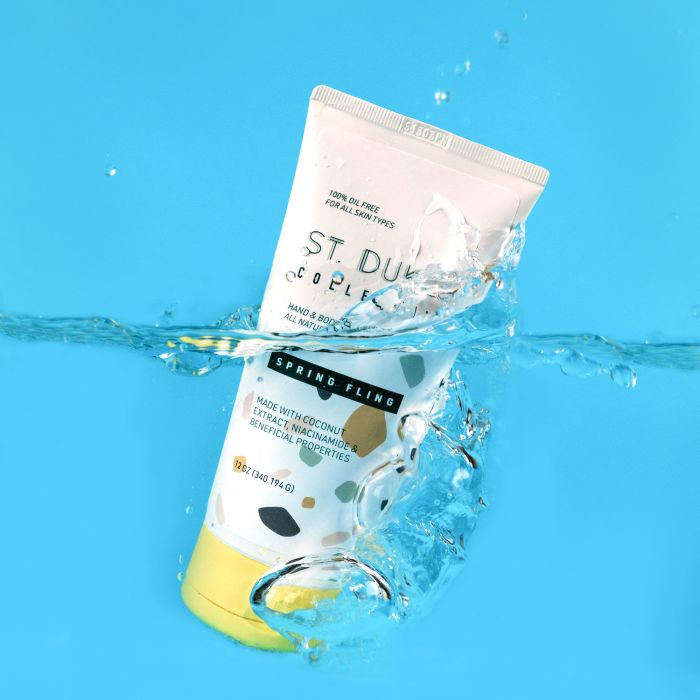
The optimal humidity for labels is around 50%, and the greater the fluctuation, the more you’ll notice issues with your labels.
Ink distortion
Moisture can have a detrimental effect on almost all labels. High humidity can affect the ink on the label, leading to minor distortions that reduce the quality of the label. The only way to detect this is with a close visual inspection. This task, though vital, may take some time to determine the effects of high humidity on your label supplies.
Humidity can also interfere with the bonds in ink to the point of fading. Having the extra water content in the air interacting with labels without a finish will produce the most fading, while durable finishes may limit this effect. You may see spot fading rather than overall label fading.
Lifting and curling
Both the label material and adhesive can also be affected by humidity. Lifting and curling happen most frequently when heat and humidity mix. Humidity can also cause lift and curl from the label backing without heat under the right circumstances.
Lifting and curling are both detectable through visual inspection. It is vital to catch this before you print your labels or they hit your label applicator. You may also be able to detect this by touch, though that isn’t a good option for many labels.
Adhesive failure
Humidity can cause complete adhesive failure on your labels. This is most often detected when applying labels to your products. They simply fall off or the corners lift quickly. The best option to test for adhesive failure is to try it on a surface similar to your product. Ensure that your labels adhere for more than 12 hours before continuing production with the remaining labels.
Proper label storage to prevent issues
You can take several steps to ensure your labels remain in the best shape possible in the face of heat and humidity over the summer. Proper storage of your labels will minimize potential yield loss and future application headaches.
Acclimatization
While just-in-time supply is convenient, you may not want to do so with your label stock. Allow your labels 24 to 48 hours to acclimate to the facility where they’ll be applied.
When storing labels, climate control is critical. While the climate-controlled areas of your business will have minor fluctuations in temperature and humidity, they should be moderate and not affect your labels. If your entire facility is not climate controlled, keep the labels in a mid-climate environment.
Low to the ground
Warm air rises, so storing your labels near the ground can make a world of difference. Higher storage locations can be 10 to even 20 degrees warmer than lower areas. Also, make sure not to stack anything on top of your labels.
Keep away from sunlight
Always keep labels inside and out of direct sunlight. UV rays from the sun can damage your labels. Storing your labels in an interior section of your business will help to protect and preserve them.
You may also want to consider storage containers for your label. Containers provide a barrier and minimize the effects of climate swings on your labels. For short-term storage, you can also bag your labels.
In conclusion
Heat and humidity can dramatically affect the performance of your labels, ultimately affecting your brand image. Therefore, recognizing the signs of damage as well as best practices of how to store your labels to minimize problems is paramount to presenting your business how you wish.

